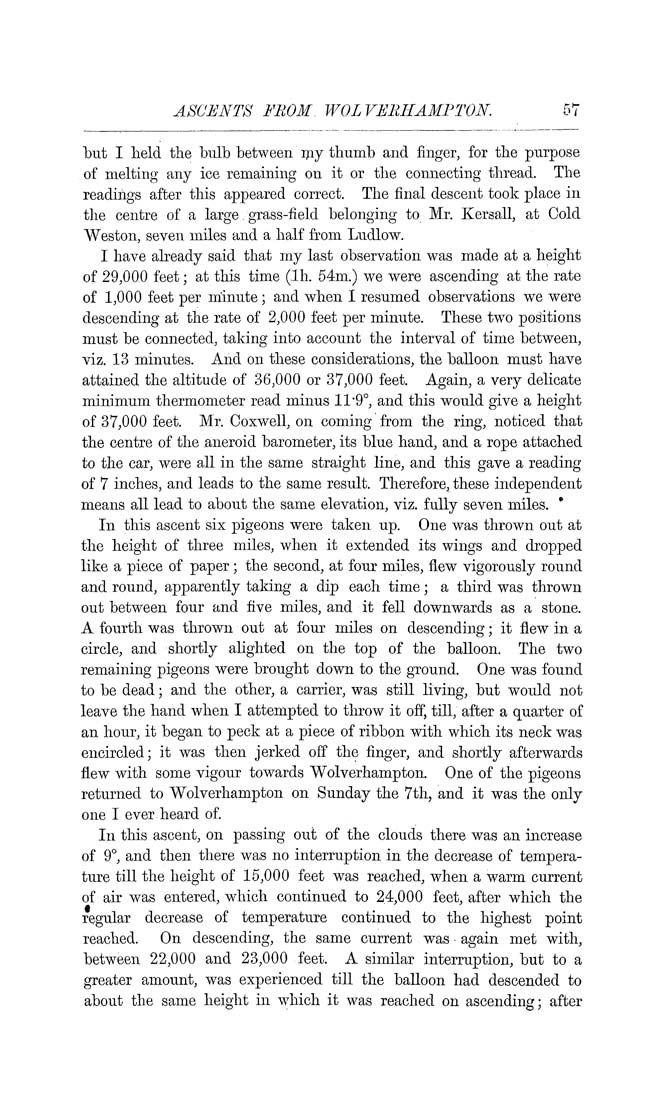ASCENTS FROM WOLVERHAMPTON.
but I held the bulb between i^y thumb and finger, for the purpose
of melting any ice remaining on it or the connecting thread. The
readings after this apjDcared correct. The final descent took place in
the centre of a large grass-field belonging to Mr. Kersall, at Cold
A¥eston, seven miles and a half from Ludlow.
I have already said that my last observation was made at a height
of 29,000 feet; at this time (Ih. 54m.) we were ascending at the rate
of 1,000 feet per minute; and when I resumed observations we were
descending at the rate of 2,000 feet per minute. These two positions
must be connected, taking into account the interval of time between,
viz. 13 minutes. And on these considerations, the balloon must have
attained the altitude of 36,000 or 37,000 feet. Again, a very delicate
minimum thermometer read minus 11*9°, and this would give a height
of 37,000 feet. Mr. Coxwell, on coming from the ring, noticed that
the centre of the aneroid barometer, its blue hand, and a rope attached
to the car, were all in the same straight line, and this gave a reading
of 7 inches, and leads to the same result. Therefore, these independent
means all lead to about the same elevation, viz. fully seven miles. *
In this ascent six pigeons were taken up. One was thrown out at
the height of three miles, when it extended its wings and dropped
like a piece of paper; the second, at four miles, flew vigorously round
and round, apparently taking a dip each time; a third was thrown
out between four and five miles, and it fell downwards as a stone.
A fourth was thrown out at four miles on descending; it flew in a
circle, and shortly alighted on the top of the balloon. The two
remaining pigeons were brought down to the ground. One was found
to be dead; and the other, a carrier, was still living, but would not
leave the hand when I attempted to throw it off, till, after a quarter of
an hour, it began to peck at a piece of ribbon with which its neck was
encircled; it was then jerked off the finger, and shortly afterwards
fiew with some vigour towards Wolverhampton. One of the pigeons
returned to Wolverhampton on Sunday the 7th, and it was the only
one I ever heard of.
In this ascent, on passing out of the clouds there was an increase
of 9°, and then there was no interruption in the decrease of tempera¬
ture till the height of 15,000 feet was reached, when a warm current
of air was entered, which continued to 24,000 feet, after which the
regular decrease of temperature continued to the highest point
reached. On descending, the same current was again met with,
between 22,000 and 23,000 feet. A similar interruption, but to a
greater amount, was experienced till the balloon had descended to
about the same height in which it was reached on ascending; after
|








